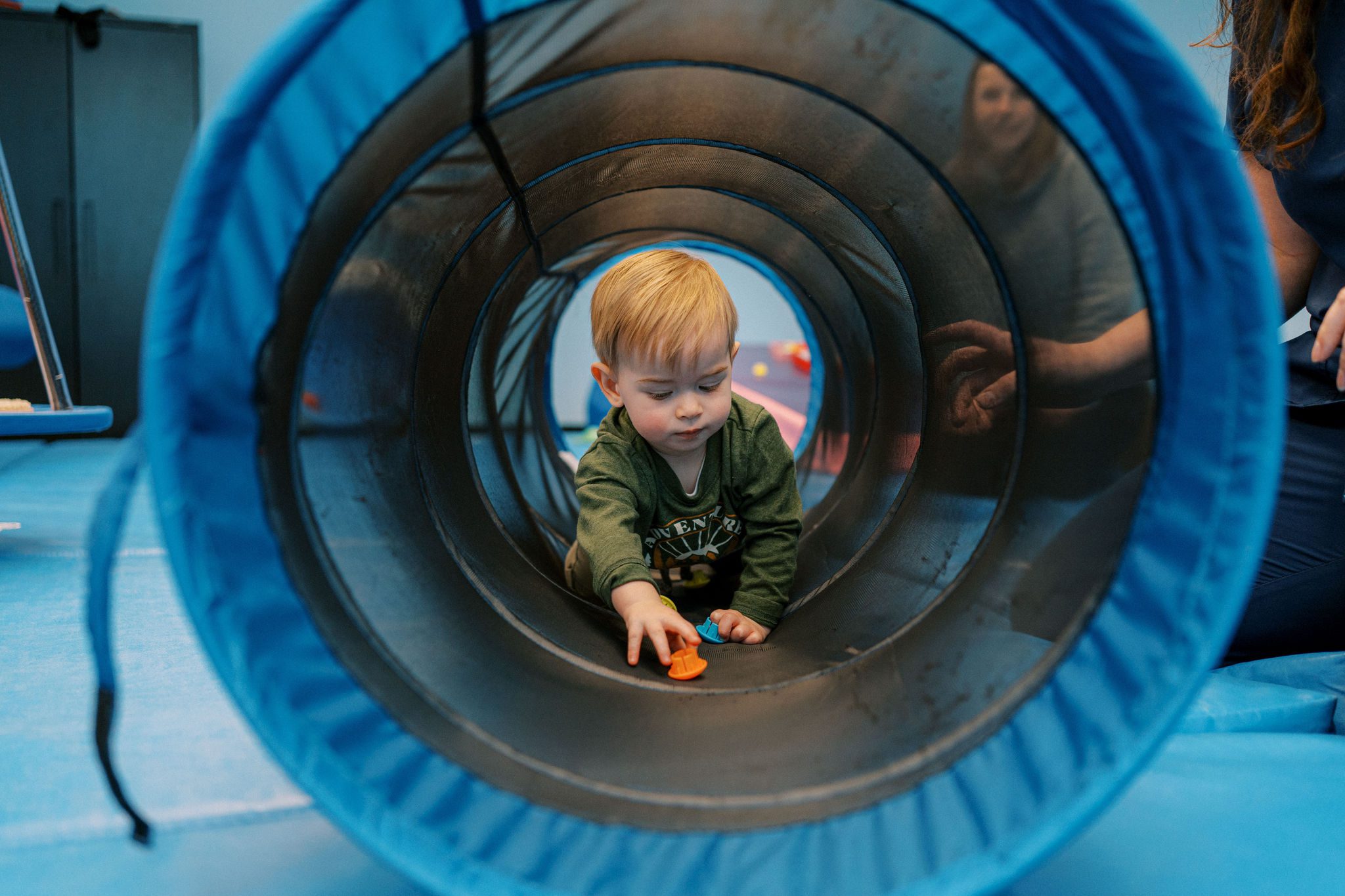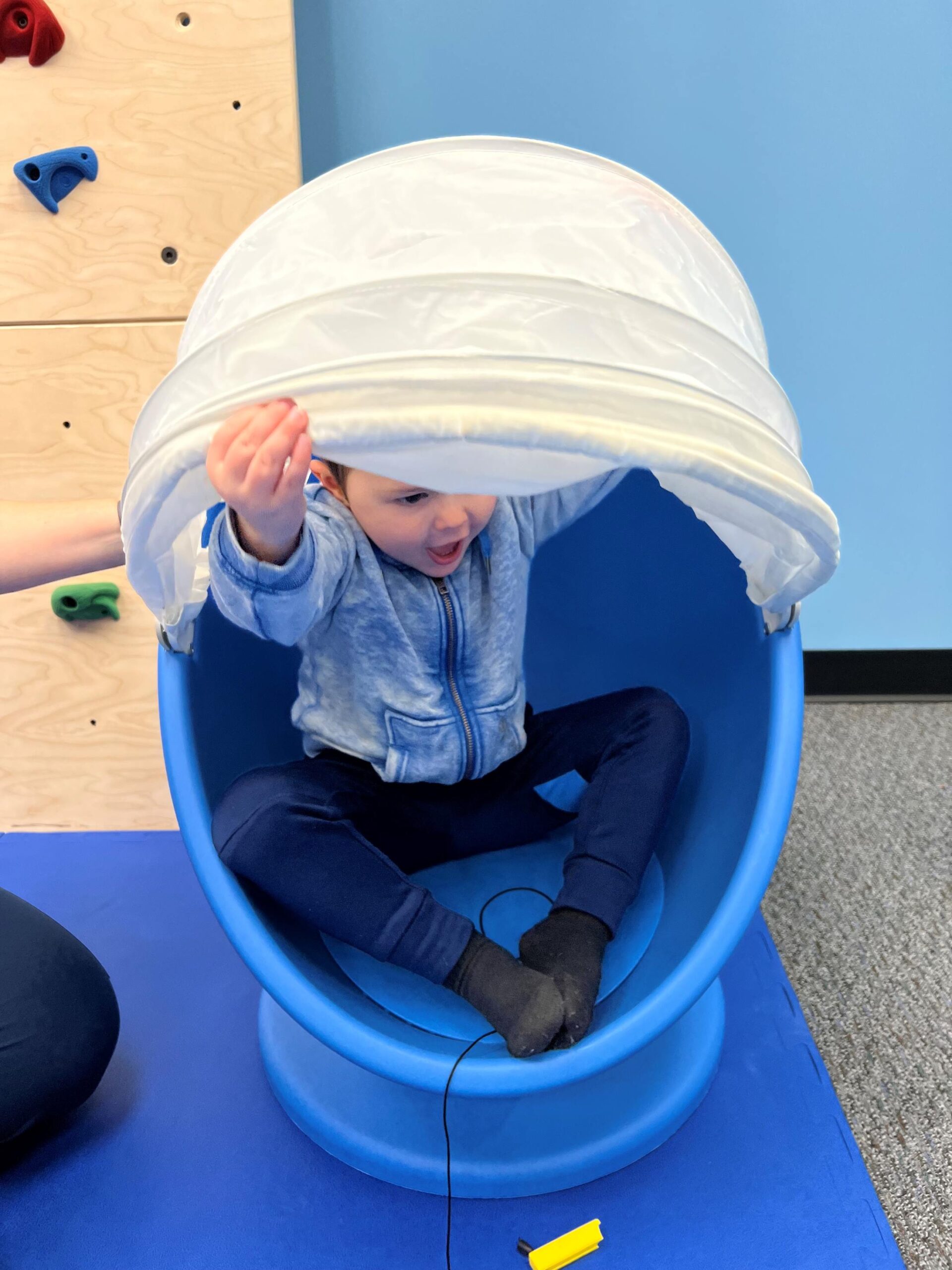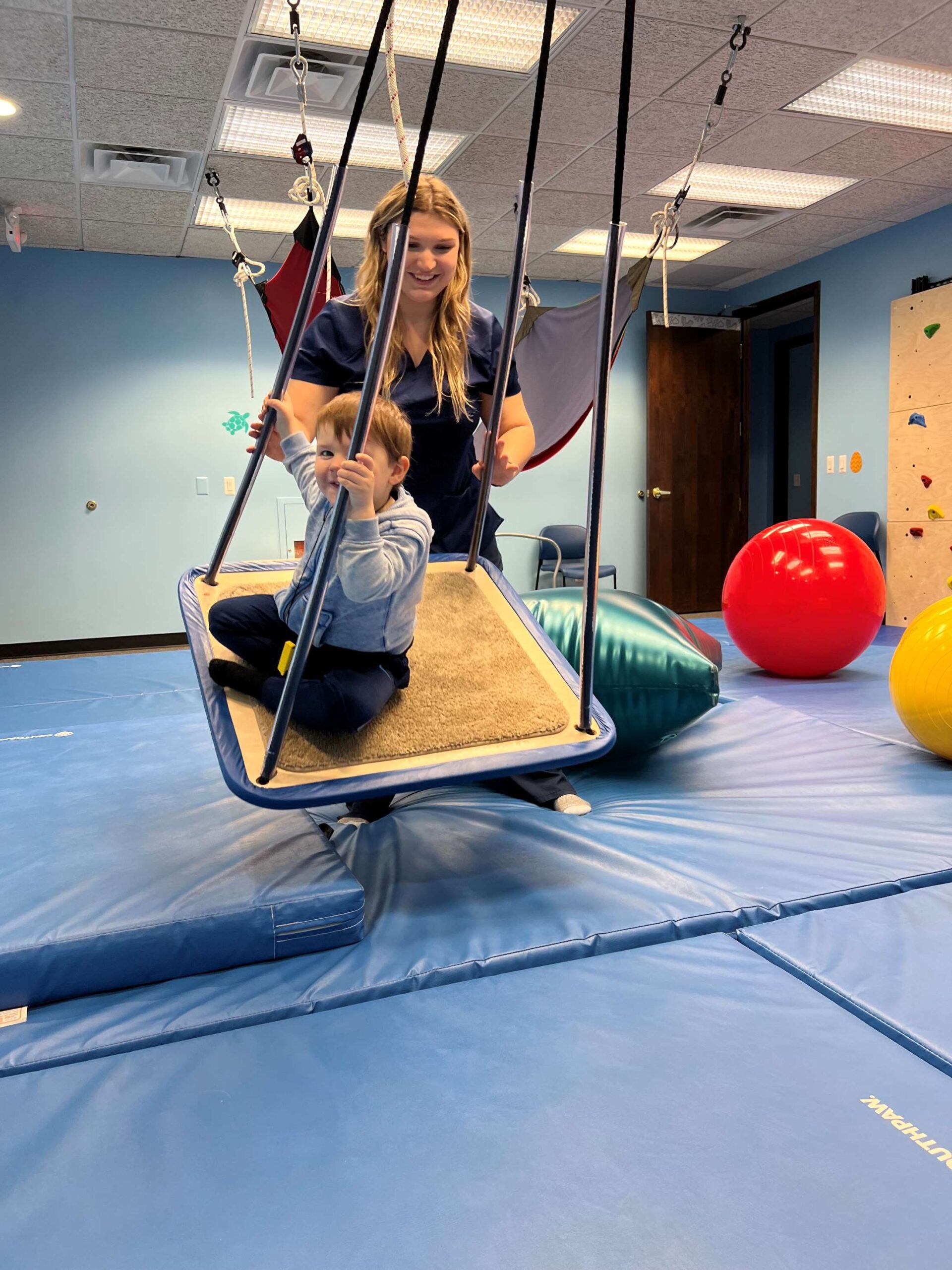Navigating the journey with a baby experiencing sensory challenges is like to riding a roller coaster. There are moments of exhilaration, yet there are also times of uncertainty and fear, as the unpredictable nature of the journey makes it challenging to anticipate or control outcomes. Babies with sensory issues exhibit diverse reactions—either heightened or diminished responses to various stimuli, including sight, touch, movement, and food textures.
Signs may include:
- Crying as soon as their diaper is dirty or when new clothes are put on; prefers to be naked
- Reacts to temperature; is always hot or cold
- Does not cuddle and withdraws from being touched by crying, looking away, or pulling their arms or legs away
- Stiffens if touched around their mouth
- Either has no awareness of an object placed on their hands or feet or may respond with panicked, frantic movements
- Pulls away or panics with stiff, textured, or non-smooth toys
- Unable to track objects
- Cries with up and down movement or on car or stroller rides; throws up with movement
- Resists rolling so their head doesn’t have to change positions
- Resists crawling and will immediately try to stand up; prefers standing before their body is ready to stand
- Cries, rejects, or vomits when puréed or new foods are introduced


The sooner sensory issues are recognized, the greater the success a child can achieve in their later years, enabling them to acquire skills for self-regulation and a deeper understanding of their bodies. We employ a comprehensive approach, encompassing both traditional and non-traditional methods, to address these challenges.
The traditional approach
The non-traditional approach





